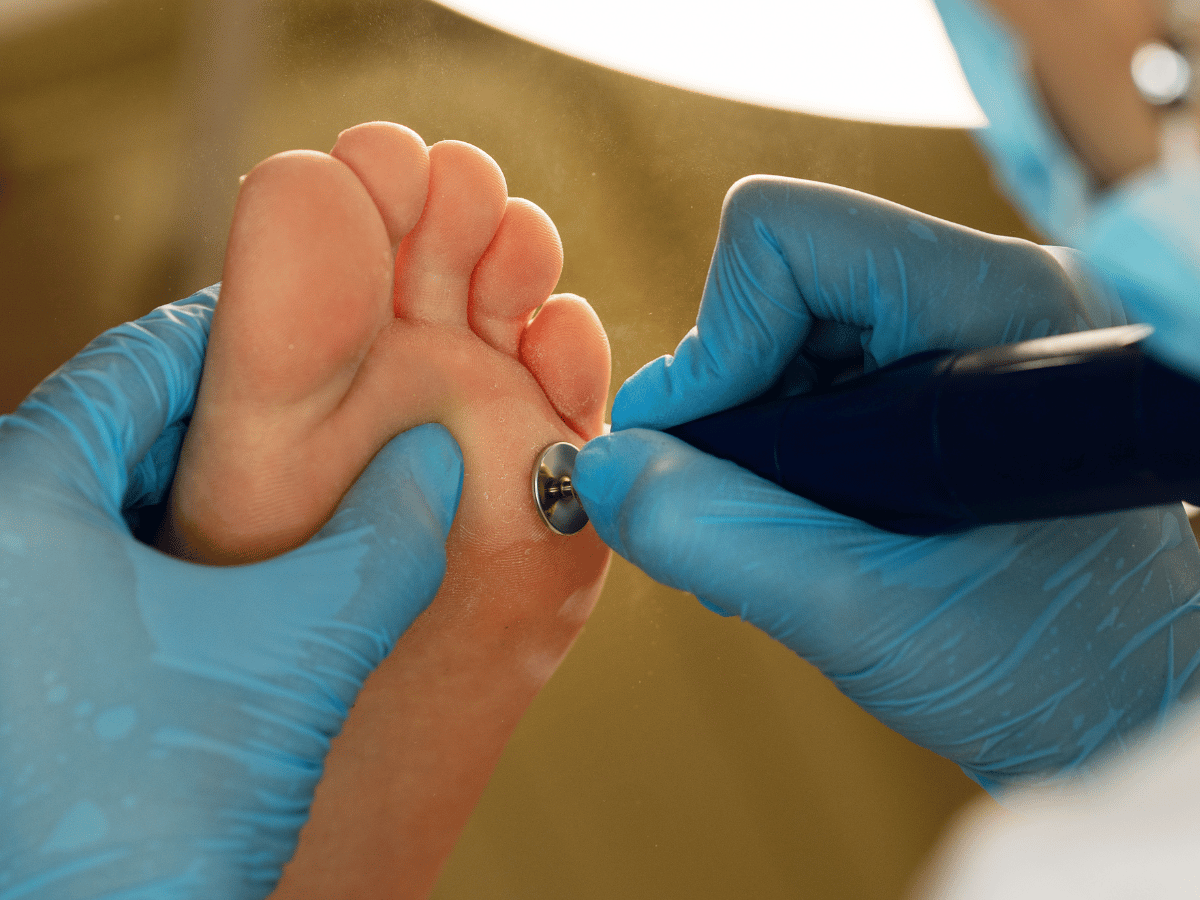
Corns and calluses are thickened areas of skin, our body’s natural response to repeated friction, pressure, or irritation. They’re often found on the feet and toes but can appear anywhere the skin is subject to pressure. While these conditions aren’t typically harmful, they can become painful if left untreated.
Simply put, calluses tend to spread over larger areas and are flat with less defined edges. Corns are smaller, circular, and often more painful, pressing deeper into the skin due to concentrated pressure.
At South Florida Multispecialty Hospital, we frequently see patients with foot discomfort caused by these conditions. Most of them are surprised to learn just how treatable, and preventable, corns and calluses can be with proper foot care.
Recognizing the difference is key to successful treatment. Here’s how they differ:
Understanding which one you’re dealing with helps determine the right approach, whether it’s an at-home fix or a visit to a podiatrist.
Not all foot pressure is avoidable, but understanding what’s behind your corns or calluses helps you manage them more effectively.
According to studies, about 10–15% of adults will deal with foot calluses at some point. Those with metabolic or circulation-related conditions face higher risks and complications.
Many people live with corns and calluses for years, brushing off the discomfort until it becomes unbearable. Watch for the following symptoms:
If pain becomes persistent or you’re unable to manage symptoms at home, it’s time to seek care. Individuals with diabetes or neuropathy should consult a specialist even for minor foot issues, delays in treatment can lead to serious infections.
Many mild cases respond well to gentle at-home care. Here’s how we recommend managing early-stage corns and calluses:
Professional intervention becomes necessary when home care doesn’t provide relief or complications arise. At South Florida Multispecialty Hospital, our podiatrists are equipped with advanced tools and techniques to manage both pain and its underlying cause.
A study in the Journal of the American Podiatric Medical Association found professional treatments reduce discomfort in more than 80% of patients. That’s powerful, and it shows that timely, expert care goes a long way in preventing recurrence.
Footwear often plays a starring role in both problem and solution. Shoes that are too tight, too loose, or lack cushioning can quickly turn daily steps into a painful ordeal.
If you’re living with diabetes, foot care isn’t just about comfort, it’s about safety. Diabetes can impair nerve function and heal less efficiently, making it easier for a small corn or callus to turn into a chronic wound.
An ounce of prevention really is worth a pound of cure. Regular maintenance helps you stay ahead of problems before they occur.
When we talk about foot care at our clinic, we often use the analogy: just like brushing teeth prevents cavities, daily attention to your feet keeps corns and calluses in check.
If you’re noticing persistent hard spots on your feet or dealing with foot pain that’s not resolving, don’t wait. Connect with South Florida Multispecialty Hospital’s podiatry experts for personalized care and lasting relief.
Corns are smaller, circular, and often painful, typically forming on pressure points like the tops of toes. Calluses cover larger areas, usually the soles, and are generally less sensitive.
They develop due to repeated friction, pressure, or irritation, often from footwear, gait abnormalities, or increased physical activity on hard surfaces.
Calluses may not be painful unless they crack or thicken significantly. Corns, due to their focused pressure, are often painful and tender to the touch.
Daily foot checks, regular podiatry visits, protective footwear, and avoiding self-treatment with sharp tools are essential steps for diabetic foot care.
Yes, soaking, removing dead skin gently, moisturizing, and using protective padding can help. However, if you're diabetic or unsure, see a podiatrist.
If they persist despite self-care, become painful, show signs of infection, or if you have a condition like diabetes, seek professional evaluation.
Footwear is crucial. Shoes that fit well and offer support reduce friction and pressure, significantly lowering your risk of developing these conditions.
Yes. Salicylic acid can burn healthy skin, especially in those with diabetes or sensitive skin. Consult a healthcare provider before use.
Your health deserves dedicated attention and comprehensive care. Join our Concierge Primary Medical Care program today and experience a new standard of personalized medical care.
Schedule a consultation now using the below listed form!
Connect with South Florida’s trusted multispecialty care team and take control of your health with compassion and convenience.
©2025 South Florida Multispecialty Medical Group. All Rights Reserved.